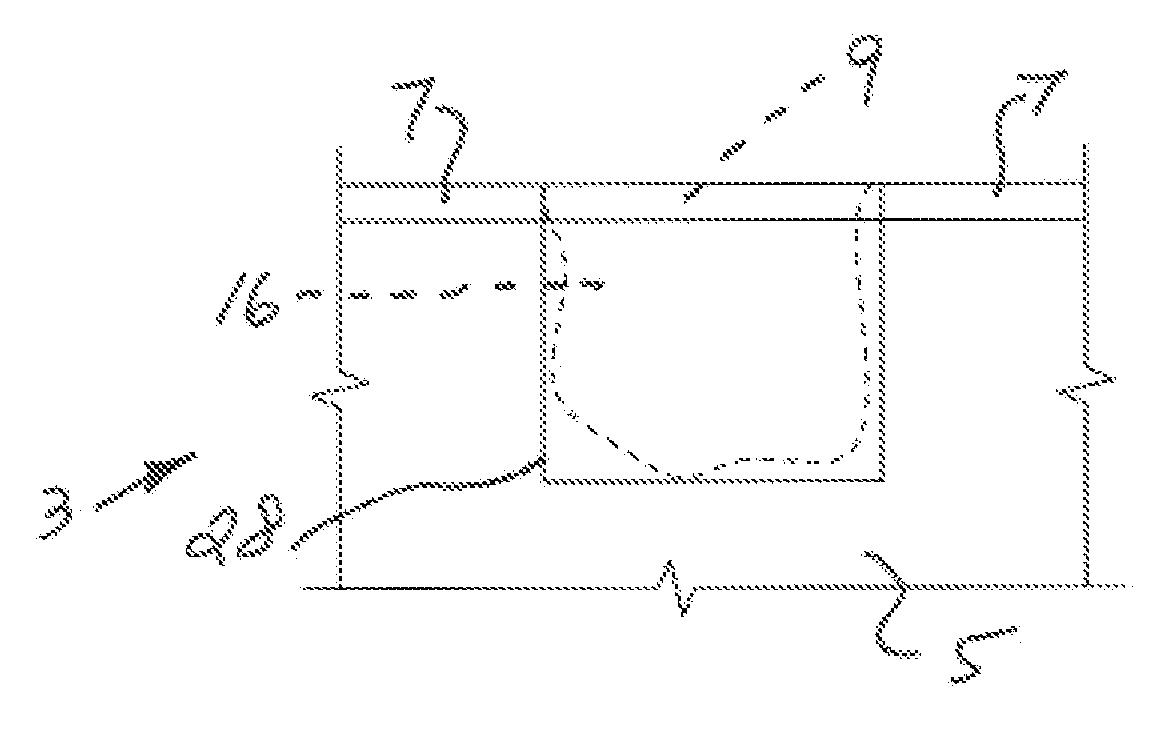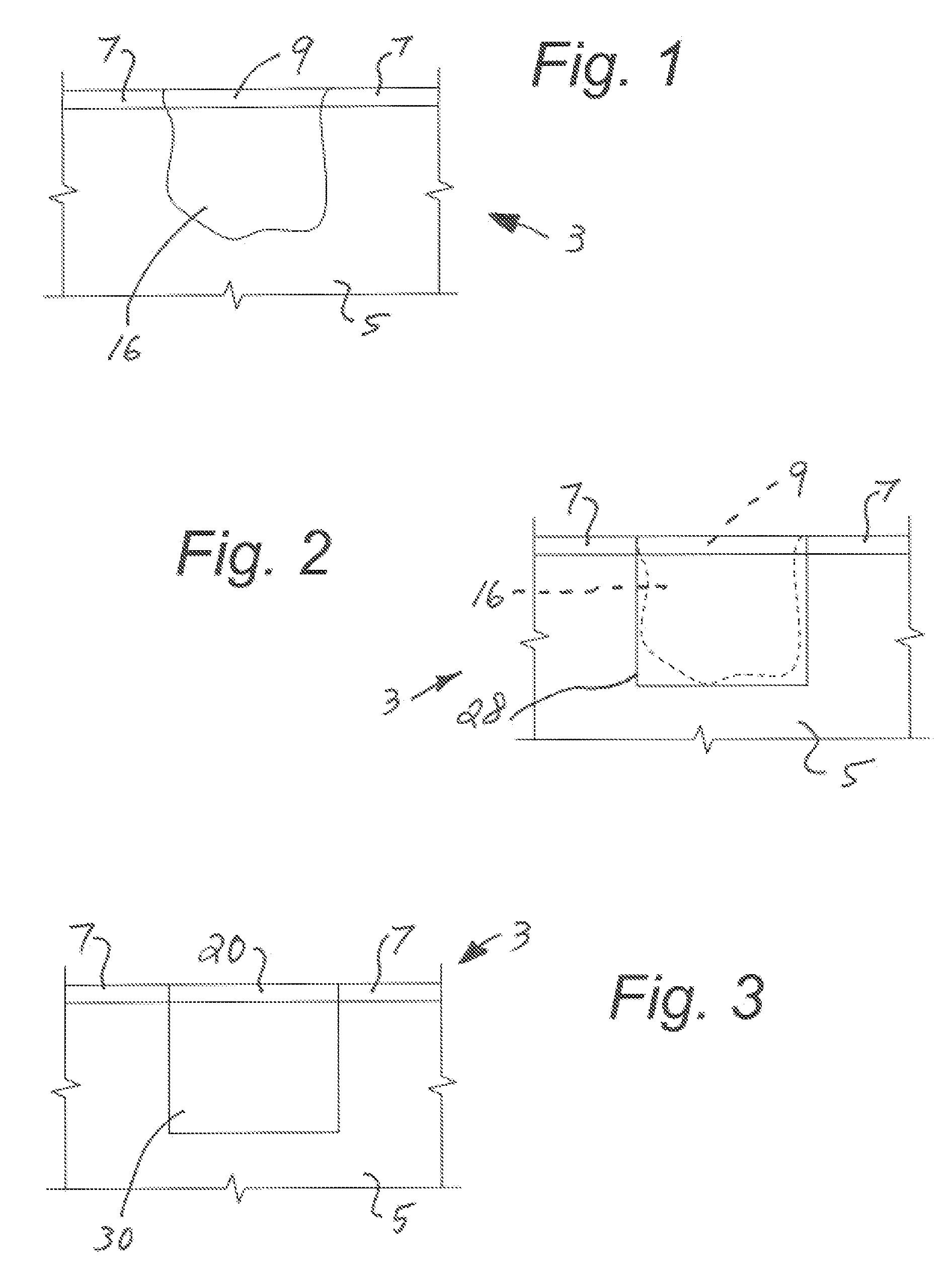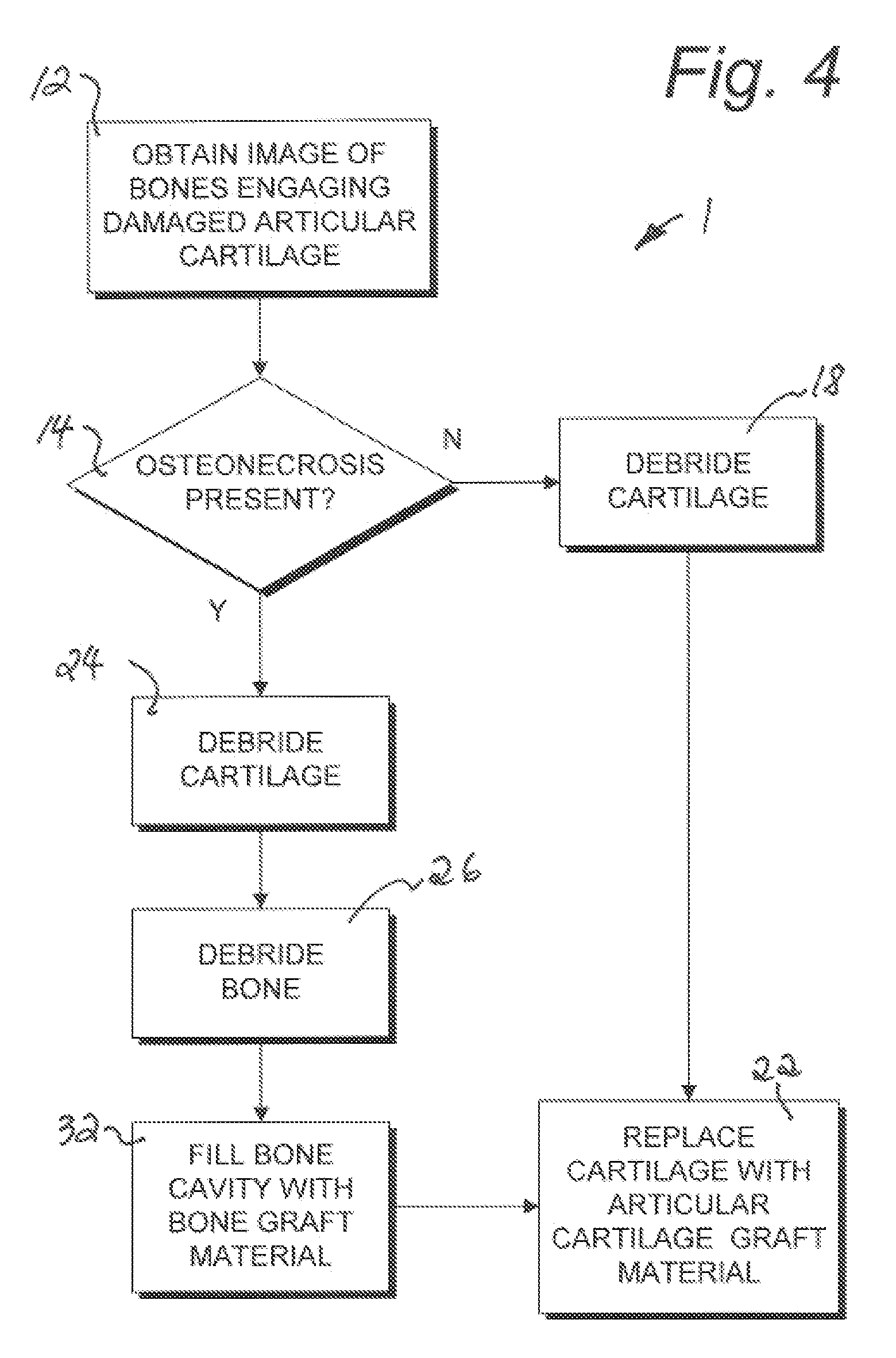Articular cartilage treatment method
a treatment method and cartilage technology, applied in the field of articular cartilage treatment methods, can solve the problems of cartilage degeneration, bone tissue deterioration, cartilage loss, etc., and achieve the effect of successfully treating articular cartilage degeneration
- Summary
- Abstract
- Description
- Claims
- Application Information
AI Technical Summary
Benefits of technology
Problems solved by technology
Method used
Image
Examples
Embodiment Construction
[0027]As required, detailed embodiments of the present invention are disclosed herein; however, it is to be understood that the disclosed embodiments are merely exemplary of the invention, which may be embodied in various forms. Therefore, specific structural and functional details disclosed herein are not to be interpreted as limiting, but merely as a basis for the claims and as a representative basis for teaching one skilled in the art to variously employ the present invention in virtually any appropriately detailed structure.
[0028]This application incorporates by reference applicant's prior pending U.S. patent application 61 / 218,757, attached hereto along with the referenced article by Kevin R. Stone. Referring to the drawings in more detail, the reference numeral 1 (FIG. 4) generally designates an embodiment of an articular cartilage treatment method according to the present invention. The method 1 is practiced to alleviate a deteriorated condition at an articular or bone joint ...
PUM
 Login to View More
Login to View More Abstract
Description
Claims
Application Information
 Login to View More
Login to View More - R&D
- Intellectual Property
- Life Sciences
- Materials
- Tech Scout
- Unparalleled Data Quality
- Higher Quality Content
- 60% Fewer Hallucinations
Browse by: Latest US Patents, China's latest patents, Technical Efficacy Thesaurus, Application Domain, Technology Topic, Popular Technical Reports.
© 2025 PatSnap. All rights reserved.Legal|Privacy policy|Modern Slavery Act Transparency Statement|Sitemap|About US| Contact US: help@patsnap.com



